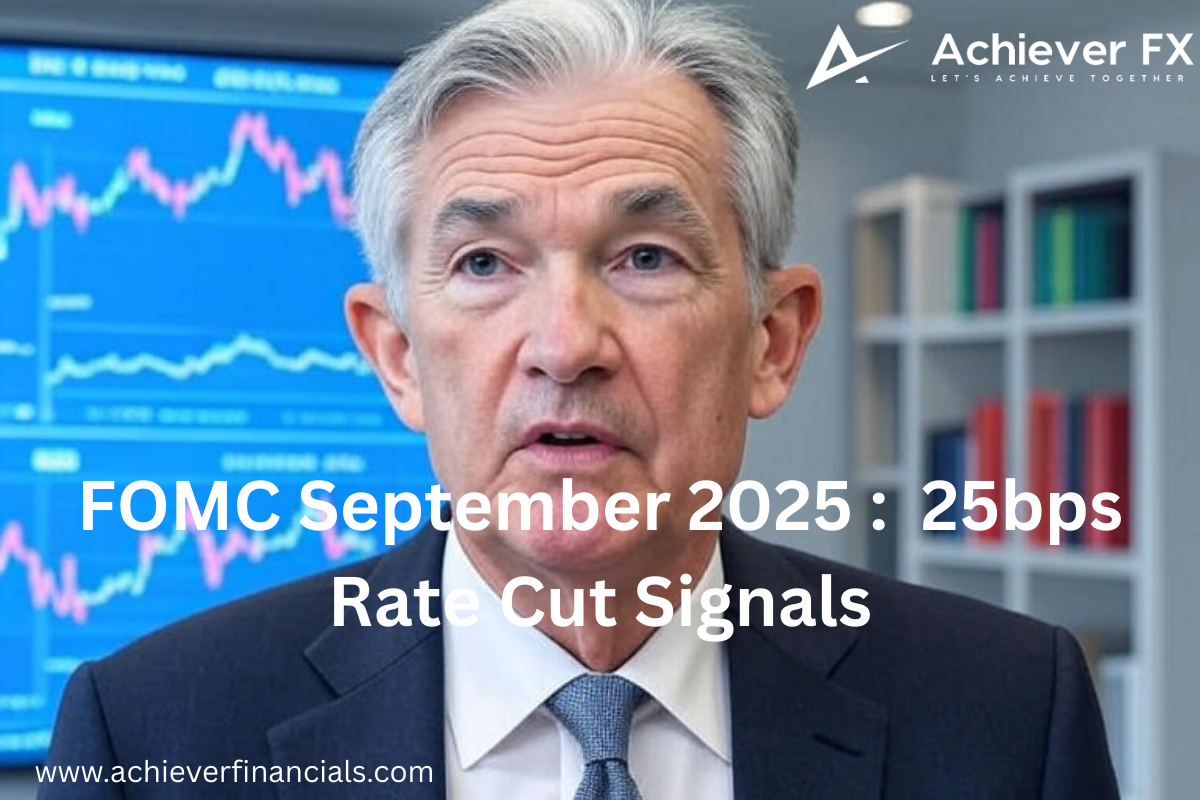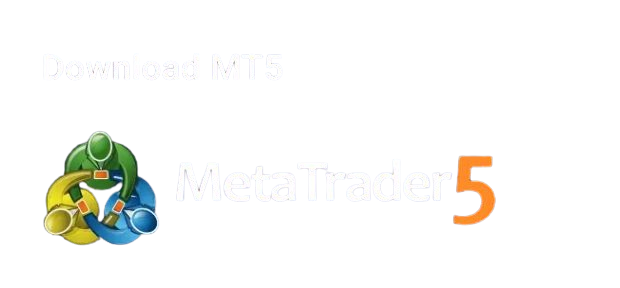FOMC September 2025
Navigating a Delicate Balance – 25bps Rate Cut Signals Prudent Risk Management
By the Achiever Financials Ltd Analysis Team September 18, 2025
In a move widely anticipated yet laced with nuance, the Federal Open Market Committee (FOMC) on September 17, 2025, lowered the target range for the federal funds rate by 25 basis points to 4.00%–4.25%, marking the first policy easing in nine months. This decision, accompanied by Chair Jerome Powell’s measured press conference remarks, underscores a pivotal shift in the Federal Reserve’s risk calculus: from inflation dominance to a more balanced vigilance over employment vulnerabilities. As Achiever Financials’ analysis team dissects the proceedings, we see this as a “risk management” pivot rather than a knee-jerk response to immediate distress, setting the stage for potential further easing while tariffs and geopolitical uncertainties loom large.
The FOMC Statement: A Snapshot of Moderating Growth and Rising Employment Risks
The official statement painted a picture of an economy in transition, with recent indicators pointing to moderated growth in the first half of 2025. Real GDP expanded at an annualized pace of approximately 1.5%, a deceleration from the prior year’s 2.5% clip, driven primarily by softening consumer spending. Business investment in equipment and intangibles offered some counterbalance, though the housing sector continued to languish amid elevated mortgage rates.
Labor market dynamics emerged as the statement’s focal point of concern. Payroll gains have decelerated sharply to an average of 29,000 jobs per month over the past three months—well below the “breakeven” level required to stabilize the unemployment rate. The jobless rate ticked up to 4.3% in August, remaining historically low but signaling softening demand amid a shrinking labor force supply, influenced by subdued immigration and participation rates. Wage growth, while moderating, still exceeds inflation, adding a layer of stickiness.
Inflation, meanwhile, has backslid somewhat from earlier disinflationary progress. Total PCE prices rose 2.7% over the 12 months ending August, with core PCE at 2.9%—elevated readings buoyed by a rebound in goods prices. Services disinflation persists, but near-term inflation expectations have edged higher on tariff-related news, per both market and survey metrics. Longer-term anchors, however, hold firm near the Fed’s 2% objective.
In light of these crosscurrents—”downside risks to employment have risen” while inflation uncertainties linger—the Committee opted for the 25bps trim, reaffirming its commitment to balance sheet normalisation via ongoing securities runoff. Forward guidance remains data-dependent: “In considering additional adjustments… the Committee will carefully assess incoming data, the evolving outlook, and the balance of risks.” Notably, a lone dissent from Governor Stephen I. Miran advocated for a bolder 50bps cut, highlighting internal debates on the pace of easing.
Powell’s Press Conference: Risk Management in the Spotlight
Chair Powell’s opening remarks, delivered with his characteristic composure, framed the decision as a proactive recalibration rather than reactive firefighting. “With downside risks to employment having increased, the balance of risks has shifted,” he stated, emphasizing the Fed’s dual mandate framework when goals are “in tension.” This shift justifies easing toward a “more neutral policy stance,” positioning the central bank to nimbly address emerging threats.
Key highlights from Powell’s discourse include:
- Labor Market Softness: Powell underscored the “unusual” confluence of slowing labor supply and demand, with job creation now lagging natural growth needs. Yet, he cautioned against overreaction: the cut is “risk management” to forestall deterioration, not a signal of imminent recession. The median SEP unemployment projection holds at 4.5% for year-end 2025, edging down to 4.3% by 2027.
- Inflation Dynamics and Tariffs: While acknowledging recent upticks—”inflation has risen recently and remains somewhat elevated”—Powell noted the “prospect of a persistent inflation outbreak has declined.” On tariffs, he described their impact as likely a “one-time shift in the price level” rather than sustained pressure, though the Fed stands ready to “ensure that [it] does not become an ongoing inflation problem.” Upside inflation risks are now “tilted,” but manageable with vigilant monitoring.
- Policy Path Ahead: Powell demurred on specifics, reiterating data-dependence, but the updated dot plot provides clues. The median federal funds rate projection for end-2025 now stands at 3.6% (down 30bps from June’s 3.9%), implying two additional 25bps cuts this year. Projections ease further to 3.4% by end-2026 and 3.1% by 2027, converging to a 3.0% longer-run neutral rate. Inflation forecasts were revised upward modestly for 2026 (PCE to 2.6% from 2.4%), reflecting tariff contingencies, while GDP growth was bumped higher across the horizon (1.6% for 2025, up from 1.4%).
In the Q&A, Powell fielded queries on fiscal policy spillovers and global tensions, maintaining that the Fed’s toolkit remains robust: “We would be prepared to adjust the stance of monetary policy as appropriate if risks emerge.” He dismissed aggressive easing calls, noting the economy’s resilience, but acknowledged the “challenging situation” of divergent mandate risks.
Market Reactions: Muted Optimism Amid Caveats
Equity markets absorbed the news with tempered enthusiasm. The Dow Jones Industrial Average rallied over 500 points intraday before paring gains to close modestly higher, while the S&P 500 and Nasdaq eked out slim advances in a choppy session. Bond yields dipped initially—the 10-year Treasury fell 5bps to 3.85%—but recovered as investors parsed the hawkish undertones on tariffs and the measured cut pace. The dollar strengthened modestly against major peers, reflecting lukewarm reception to the “cautious” forward guidance.
Options pricing now embeds ~65% odds of another 25bps cut in November, aligning with the dot plot’s dovish tilt but tempered by Powell’s emphasis on incoming data.
Achiever Financials’ Analysis: Implications for Investors
At Achiever Financials, we view this FOMC outcome as a textbook application of the Fed’s flexible inflation-targeting regime—easing preemptively to safeguard employment without reigniting price pressures. The upward GDP revisions signal underlying resilience, potentially buffering against labor headwinds, but the tariff wildcard introduces volatility. A “one-time” price jolt could fade by Q4, supporting our base case of two more cuts (totalling 75bps by year-end), bringing rates to ~3.50%–3.75%.
For portfolios, this favours duration extension in fixed income (target 7–10 year Treasuries for yield pickup) and selective cyclicals in equities, where lower rates could catalyse capex rebound. However, vigilance on tariff escalation is paramount; persistent effects might cap easing at one additional cut, pressuring high-beta sectors.
| Key SEP Metrics | Sept 2025 Median | June 2025 Median | Change |
|---|---|---|---|
| GDP Growth | |||
| 2025 | 1.6% | 1.4% | +0.2% |
| 2026 | 1.8% | 1.6% | +0.2% |
| 2027 | 1.9% | 1.8% | +0.1% |
| Unemployment Rate | |||
| End-2025 | 4.5% | 4.5% | 0 |
| End-2026 | 4.4% | 4.5% | -0.1% |
| End-2027 | 4.3% | 4.4% | -0.1% |
| PCE Inflation | |||
| 2025 | 3.0% | 3.0% | 0 |
| 2026 | 2.6% | 2.4% | +0.2% |
| 2027 | 2.1% | 2.1% | 0 |
| Fed Funds Rate (End of Period) | |||
| 2025 | 3.6% | 3.9% | -0.3% |
| 2026 | 3.4% | 3.6% | -0.2% |
| 2027 | 3.1% | 3.4% | -0.3% |
Source: Federal Reserve Summary of Economic Projections
Looking Ahead: Data-Driven Vigilance
As the dust settles, the Fed’s path hinges on September’s jobs report and Q3 GDP—yardsticks that could accelerate or brake the easing cycle. At Achiever Financials, our models project a soft landing probability of 70%, contingent on tariff moderation. Investors should prioritize diversified, rate-sensitive allocations while hedging inflation tail risks.
For tailored portfolio strategies amid this evolving landscape, contact our advisory team. The road to 2% inflation and full employment remains navigable, but as Powell aptly noted, it demands “careful assessment” at every turn.
Disclaimer: This analysis is for informational purposes only and does not constitute investment advice. Past performance is not indicative of future results.








